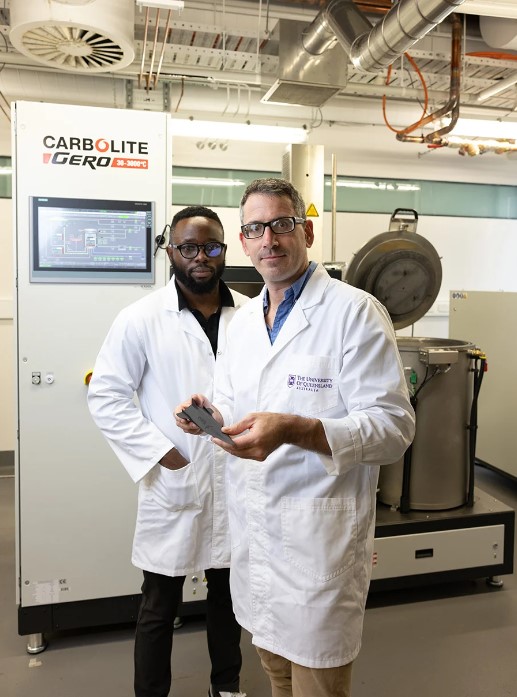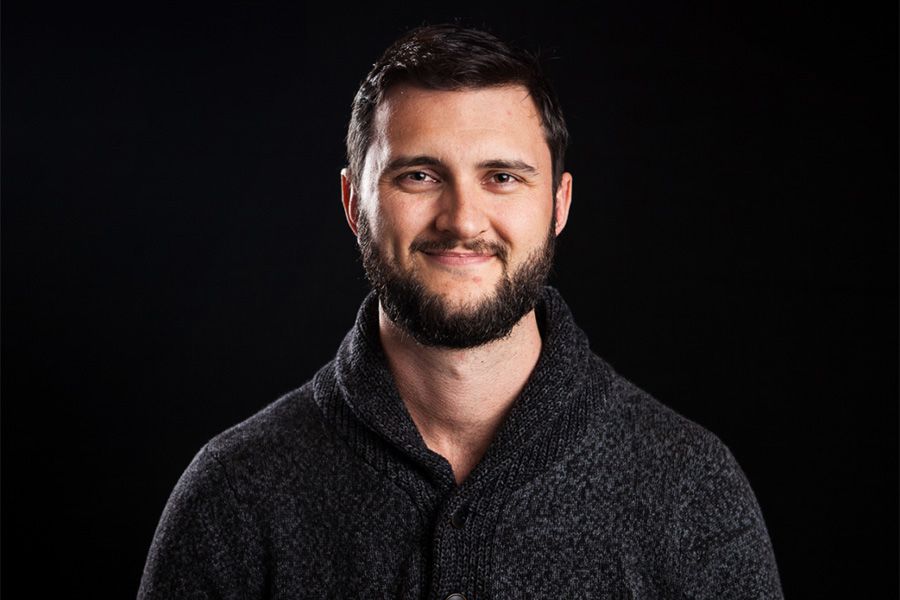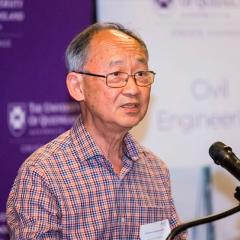Original story posted on: UQ Stories
A custom-built furnace that can heat materials to almost 3000 degrees Celsius has been installed at The University of Queensland to develop components for Australia’s burgeoning space industry.
The furnace is the first of its type in Australia, allowing UQ researchers to make the next generation of ultra-high temperature composite materials for hypersonic flight.
Key points:
- A UQ furnace heats to temperatures of almost 3000 degrees Celsius
- The furnace can produce components that withstand hypersonic flight into space
- UQ will work with industry partners to pioneer ceramic matrix composites (CMC) manufacturing in Australia
Hypersonic vehicles travel more than five times faster than the speed of sound, and Associate Professor Michael Heitzmann said they have to be made from materials that can withstand extremely high temperatures caused by aerodynamic heating

Dr Michael Heitzmann (right).
“That’s where UQ and our new furnace at the Centre for Advanced Materials Processing and Manufacturing – or AMPAM comes in,” Dr Heitzmann said.
“We are working directly with industry to identify appropriate and cost-effective high-temperature ceramic matrix composites or CMCs, tailored to hypersonic flight applications.
“In areas like a rocket nozzle or a hypersonic vehicle, the temperatures we’re talking about approach those seen on the surface of the sun.
“We are trying to get the utmost temperature resistance out of our material and find the most thermal-resistant materials possible.
“We are pioneering CMC manufacturing in Australia – it is a rare class of material because it’s extremely lightweight and has exceptional heat resistance.”
Growing demand for UQ technology
The components made in the German-manufactured furnace will be used by companies such as Brisbane-based aerospace manufacturer Hypersonix Launch Systems, which specialises in hypersonic technology and scramjet engines.
Hypersonix Manufacturing Lead Sam Grieve said the UQ team would produce an engine part for the DART AE, a three-metre-long, single-use vehicle, powered by a hydrogen -fuelled SPARTAN scramjet engine.
“The insert is in a part of the engine that could be subjected to temperatures more than 1300 degrees Celsius, due to hypersonic flows and shock waves,” Mr Grieve said.
“Normal metal alloys would fail at that temperature, so we need high-performance lightweight materials to ensure the engine will survive in flight.”




